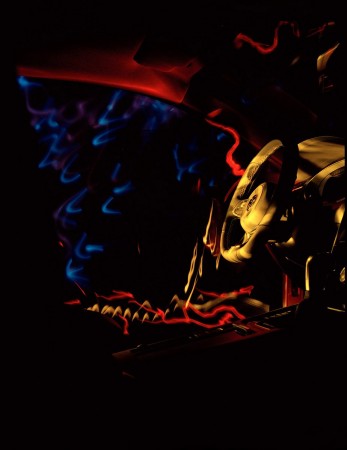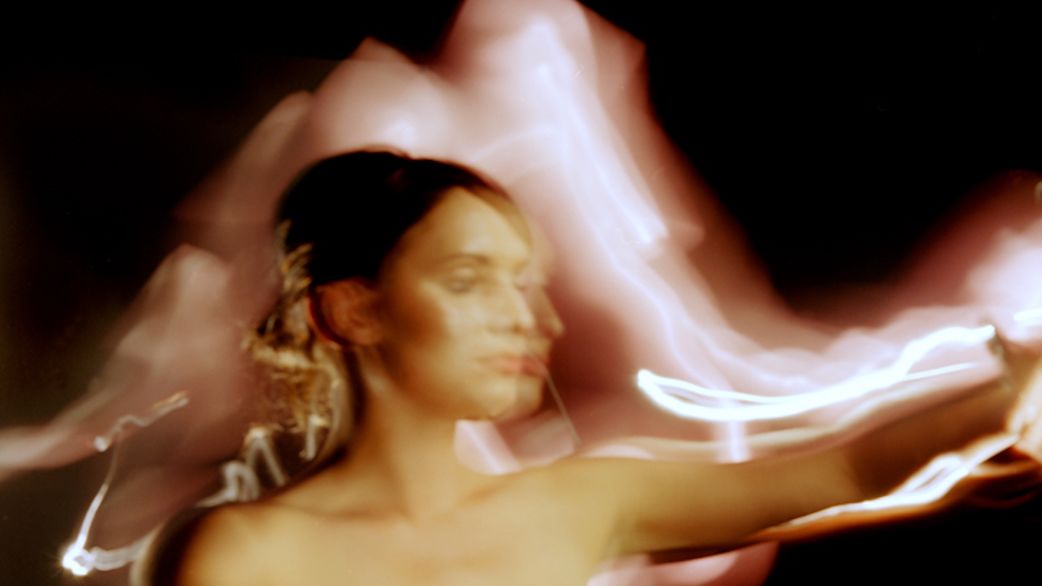
When Pete Eckert started going blind, he decided to channel his feelings of loss into art. In his 20s at the time, Eckert would spend whole days preparing graphite drawings and woodcuts before asking his wife to describe the results to him.
But the process was, in his own words, “driving my wife crazy.” So in search of a more instantaneous medium, he turned his hand to photography.
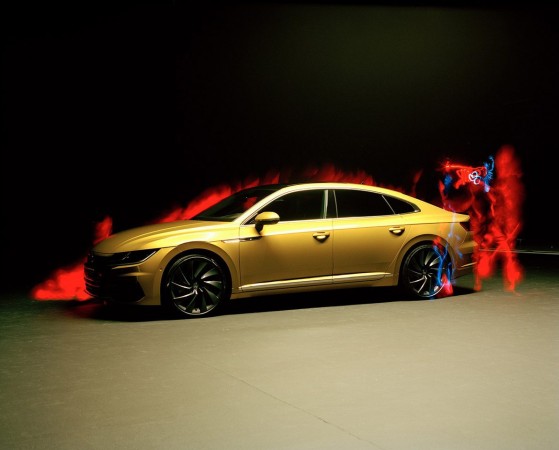
More than two decades after entirely losing his sight to retinitis pigmentosa, a degenerative eye disease, Eckert has established a successful career as a self-taught photographer. His striking, ghostly images have been sought after by the likes of Playboy magazine, which commissioned a series of eerie nudes, and Volkswagen, which recently hired Eckert to photograph its new car for an advertising campaign.
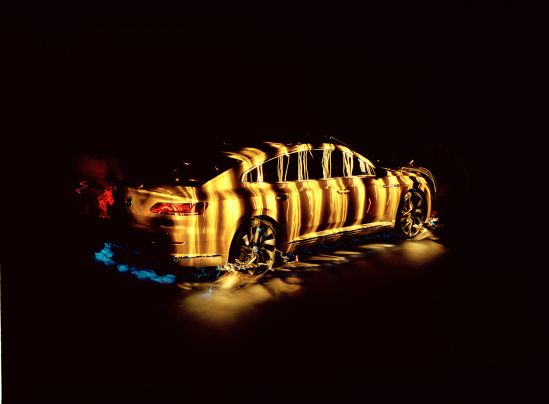
This year, Volkswagen hired Eckert for an advertising campaign. Credit: Pete Eckert
“I view my work, and the blind photography movement, as an extension of the impressionist movement from a hundred years ago,” he said. “A lot of the impressionists had vision problems, they showed a different way to interpret things. The blind photography movement is the next logical step.”
During his first forays into photography, Eckert would go on excursions at night with his German Shepherd, Uzu, for protection. He began by photographing statues, though he soon sought more interesting subject matter.
“To take photos of sculptures isn’t really fair because the art is already there,” he said. “What I was looking for was a way of graphically showing what blindness is like.”
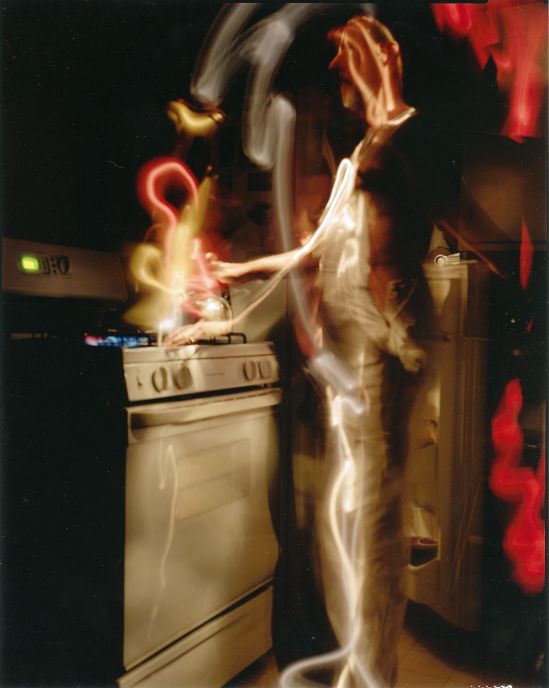
Eckert says that he builds pictures in his mind, using sound and touch to visualize his subjects.Credit: Pete Eckert
This new focus resulted in a distinct photographic aesthetic — images composed of ghostly figures and artfully blurred lines. Playing with light and long exposures, Eckert builds the pictures in his mind, using sound and touch to visualize his subjects.
“I actually build the images with layers and layers of information — I’m memorizing the layers as I put them together,” said Eckert, who claims to be able to store up to 100 images in his short-term memory.
Many of Eckert’s pictures are shot in his home studio, though some of his most arresting images merge phantom-like figures with outdoor backdrops. He has even taken to photojournalism though his collection “Bus Series,” in which he documents the difficulties facing blind and disabled people on public transport.
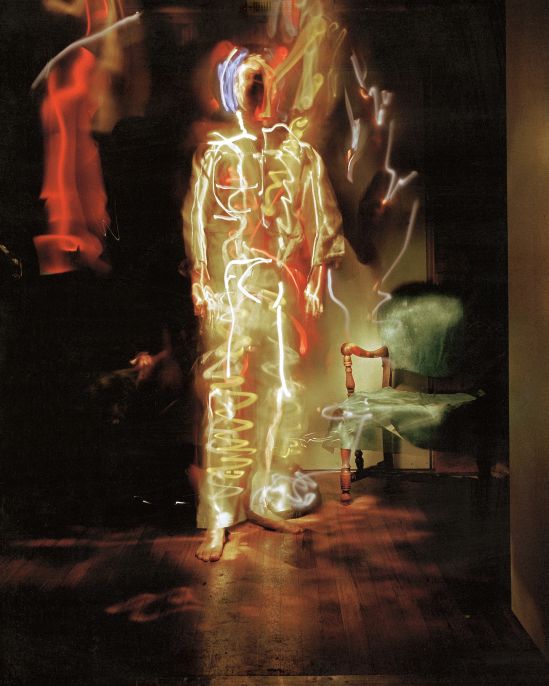
Eckert’s images aren’t simply metaphors for blindness. Many of them have been shot to represent, literally, what his mind sees. Credit: Pete Eckert
“You come to understand the ‘sound signature’ of an object,” he said. “Take a stop sign, for instance. A stop sign shimmering in the wind vibrates and (projects) this image that oscillates. At first you can’t hear the pole holding up the sign … but it has a sound shadow that’s many feet long.
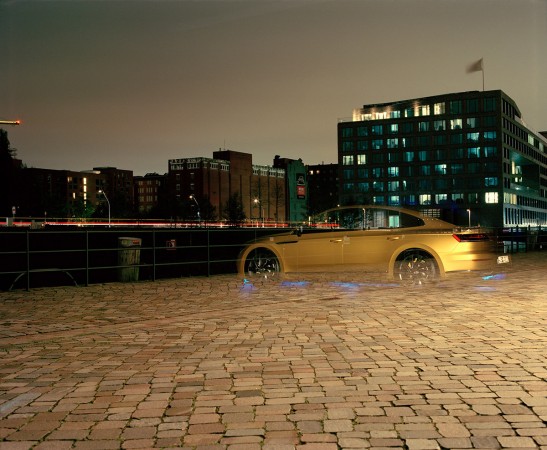
“I actively listen to things, and then go up to touch them so I can relate the sound shadow to what that object actually is,” he said. “I’m slowly building a language of sound to associate with the objects.
“It’s like a baby learning to see. When they’re first born, babies can’t see well at all. As they learn to see, they have to associate words to objects and they become more real.”

Eckert’s images aren’t simply metaphors for blindness. Many of them have been shot to literally represent what his mind sees, offering sighted people a compelling look into his world.
Eckert claims to be able to see “light” emanating from his own bones, something he compares to the “phantom limb” sensation experienced by some amputees. He believes that this phenomenon is a result of his ongoing efforts to perceive the world around him.
“There is a section of the brain that’s not being used when you’re blind,” he said. “(But) your brain, is ready to (redirect) that capacity. So, for the past 20 years, I’ve been actively rewiring my visual cortex through sound, touch and memory inputs.
“I believe that if someone did an MRI on me, my visual cortex would be just as active — and it would be cross-wired with my other senses.”
See more of Pete Eckert’s photos at www.peteeckert.com

